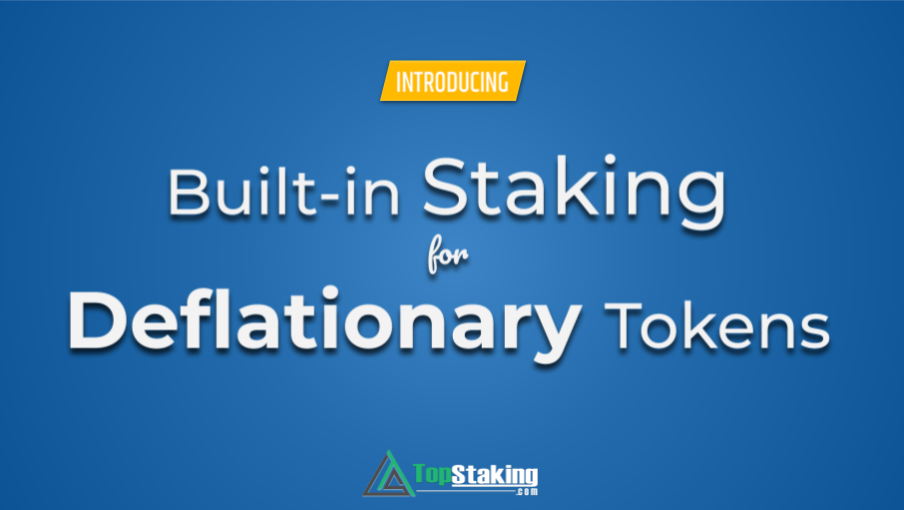
Built-in Staking for Deflationary Tokens
MakerDAO is an Ethereum token that has become a token of the most valuable and exciting cryptocurrency products, Defi. Defi or Decentralized Finance is the most exciting and fastest growing portion of the cryptocurrency industry and its all based around MakerDAO’s DAI stablecoin.
But, in order to make DAI, you need to have MKR. And unlike other cryptocurrencies, there are less and less MKR as time goes on. To date 4,625 of 1M MKR tokens have been burned, with 8,650 MKR worth of stability fees that still need to be burned currently and a yearly burn rate of nearly 20k MKR or 2% of initial supply.
This deflationary burning of tokens is the equivalent of staking…just done in reverse. So lets look into What MakerDAO is, how it works, and how you can stake and earn with MKR token.
What is MakerDAO?
MakerDAO is a decentralized autonomous organization that runs on the Ethereum blockchain and is a protocol for minimizing the volatility of its own stablecoin DAI.
What is DAI?
DAI is the first ever fully-decentralized stablecoin. It maintains a 1:1 peg to the USD. Since stablecoin DAI is backed by ETH, a volatile crypto, maintaining the peg gave rise to interesting challenges.
$1.00
| = | 1 DAI
|
History
2015 was when the project started. To fund its development, they sold MKR tokens instead of conducting an ICO like most did. After 3 years, in 2018, Maker launched its own decentralized stable coin DAI and hast been widely respected across the cryptosphere ever since.
Who is using DAI?
Having issued more than $77 MM in DAI (debt) to date and inside its smart contracts holding 2% of all Ether, it’s safe to claim that DAI is the most successful project ever built on Ethereum.
Maker continues to see perpetual 20% monthly growth in issued DAI. 71% of users spends their DAI as soon as they have it. This signals a shift of usage rather than speculation.
How does it work?
For example, you sent 1 ETH (worth $150), this will allow you to take up to $100 DAI (assuming a 150% collateralisation rate $100/1.50) against your $100. If the price of Ether drops below $100 your Collateralised Debt Position(CDP) will be forcefully closed with a 13% penalty if you are liquidated.
You need to put in more Ether or take out less DAI in the first place to stop this from happening. This is to ensure there’s always enough capital locked against the amount of money being taken out.
Send Ether to Maker’s
$150 | Creating a Collateralised Debt Position (CDP)
@150% collateral ratio | Draw DAI
$100 (debt) |
If you want your Ether back, you need to pay back the amount you took out with the addition of a minor fee.
Use DAI to
| Close CDP + pay Stability fee
| Get your
|
How Does it Stake?
When we think of staking we usually think of inflation. New tokens are created and rewarded to those who put stake on the line and secure the network. However, deflationary currencies can stake too, and it’s a much easier process.

Looking at a simple supply and demand graph. Inflation is the equivalent of increasing supply. So, this would mean that over time prices will also go up with inflation if demand stays the same. So, if your tokens are not staking and sitting idle and demand stays the same you are losing purchasing power.
Deflationary tokens such as MKR work the opposite because they lower supply by burning tokens.

This means that if demand stays the same, the price for things will go down. So just by holding a deflationary token you are essentially receiving all the benefits of staking. Your purchasing power is increasing as people use the network and burn other MKR.
What is the Staking APR of MKR
The staking APR for a token like MKR is variable. It depends on a couple factors. 1 the stability fee which accrues interest fees which burn maker, the MKR token price, CDP’s closing, eventually the DSR (DAI savings Rate).
I won’t go into detail on all of this as there are better resources on MKR to learn this. But, you can watch the burn rate (or effective APR) on https://mkr.tools/tokens/mkr

In the snapshot above 10/8/19 you can see that the annual burn rate of MKR is 18963 tokens. Of the 1M token supply that means around 2% of the supply given constant variables is to be burned. This would roughly equate to a 2% APR for holding MKR (again depending on many multiple variables).
Like the sound of Deflationary assets?
If you like this idea of built in staking via burning you are in luck because there are more tokens that do the same thing. Mainly exchange tokens BNB, CET, and LEO. Exchanges share value and equity via these tokens and whenever they burn them, they are essentially reducing supply and making yours more valuable. Or Staking as we like to call it.
So we hope this short article was informative and helped explain the staking nature of holding MKR even though it doesn’t use POS or earn staking rewards directly.









































